14 April 2023
As European nations seek sovereignty in space, how will they define their role on the international stage? - Space News Roundup
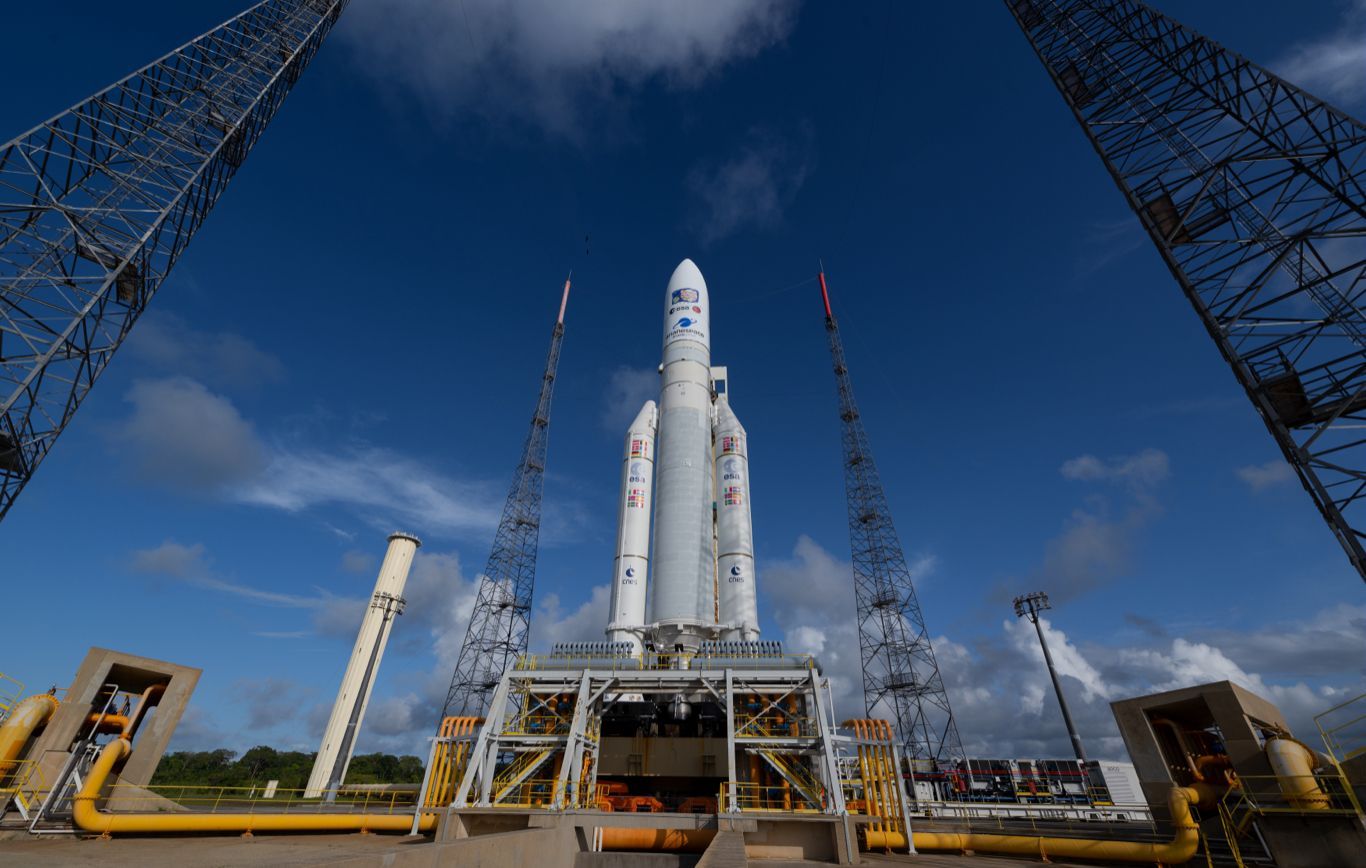
ESA prepare to launch JUICE (Image:ESA)
On Friday ESA’s Jupiter Icy Moons Explorer mission (JUICE) set off on its 8 year journey to explore the moons of Jupiter. The historic moment marks the first European mission to gas giant, and will carry 10 scientific instruments, to be used to observe and explore the possibility of life on the icy worlds of Ganymede, Callisto and Europa. Furthermore, the mission represents a continent that is redefining its role in space and pushing to establish itself as a heavyweight in the New Space economy.
ESA and European nations have long been promoting the idea of European space sovereignty, and have longed to achieve goals such as independent space launch capabilities. These goals seem to be coming closer. However, we also see the international market growing ever-more competitive, with new stakeholders looking to increase their access to space through reusable launch technology, and developing their own respective commercial sectors. European nations will need to work harder than ever in order to catch-up, and also keep-up.
But could Europe also play a pivotal role in defining relations in New Space? The Ukraine war, the Taiwan crisis and faltering economic conditions are reshaping international relations, and US-Chinese relations continue to deteriorate. Furthermore, in an interview over the weekend, French President Macron suggested that Europe should take an independent path and not follow US foreign policy on Taiwan, saying "Being an ally (of the US) does not mean being a vassal... doesn't mean that we don't have the right to think for ourselves,”. While his points were not met well with all leaders, does it suggest an overall European ambition to define its own position on the international stage? Could a European sovereign space programme play a role in mediating international relations?
International stage becoming increasingly innovative and competitive
European nations are taking big strides in space, but they will still have their work cut out in competing on the world stage. This week, new and established nations continued to break new ground. More updates regarding Japan’s iSpace and their maiden commercial lunar lander have been published, and it is now expected that the mission will arrive on the surface on April 25th. The lander will also delver the UAE’s first lunar rover, Rashid, and carry out the first commercial transaction on the Moon.
There have also been further updates regarding the debut of SpaceX’s reusable, interplanetary Starship, with Elon Musk now anticipating the third week of April for the maiden launch. But SpaceX are also beginning to face more competition in the reusability market. The South China Morning Post this week reported that China are planning to “drastically cut the cost of space launches in response to challenges from the United States’ reusable rockets.” A new launching system has been required to cut the cost of launches to 5 percent of that currently offered by the Chinese Long March rocket series. This would be achieved using the “Long-Range Aerospace Transportation System”, being built by China Aerospace Science and Technology Corporation (CASC). The hypersonic space plane would be able to carry up to a 60 ton payload into Earth orbit, and has also been required to be reused up to 100 times.
Similarly, Chinese company CAS Space (spinoff from from state-owned CAS) has been performing tests using a reusable rocket prototype with sea platform landing tests. The prototype reached 3,280 feet (1,000 m) and landed back on the platform. Also, Dawn Aerospace, operating from the US, New Zealand, and the Netherlands, has successfully tested their spaceplane. The prototype reached at altitude of 6,000 ft, with the aim of testing the feasibility of their “Mk II Aurora” to eventually be able to reach an altitude of 100km and return safely on the runway. Additionally, an increasingly familiar name in the space launch market, Relativity Space, announced this week that they will shelve plans for their Terran-1 rocket, which had a semi-successful launch last month, instead using resources to focus on their larger, fully reusable Terran-R rocket. The latter is being dubbed as a direct competitor to SpaceX’s workhorse Falcon-9 rocket.
Europe will have much work to do in order to compete in the launch market, especially since lacking efficient and cost-cutting reusable technology. But they also face competition in Earth orbit, with Starlink, Amazon Kuiper and OneWeb being just some of the mega-constellations dominating the finite number of satellite slots. On Tuesday, South Korea announced that they also plan to carry out the launch of a commercial satellite, as part of their bold plans for New Space. This follows on from their first first satellite launch using their homegrown Nuri rocket last June. The European Commission does have plans for its own constellation known as “IRIS2”, which aims to provide connectivity for the whole of Europe, and responds to the “increasingly contested geostrategic environment” (ec.europa.eu, 2022). However, they should notice the pace at which this market is moving, especially since China recently announced their own “Guowang” mega-constellation of 13,000 satellites.
Europe may also find cause to be concerned about their crewed-access to Earth-orbit in future, especially since ESA announced that they will no longer be working with China on their Chinese Space Station (CSS), citing political and financial reasons. Also, on April 10th the Russian TASS news agency announced that Roscosmos are moving forwards with plans for their new station (Russian Space Agency) and are taking steps to adapt their Angara-A5M launch vehicle in order to deploy the modules of the Russian Orbital Station (ROS).
With ESA moving away from the CSS, likely unable to work with Russia, and ISS coming to the end of its life, will Europe choose to work purely with future commercial space station partners? Or will president Macron’s sentiments become reality, where European nations choose to defy the US and build bridges with their adversaries?
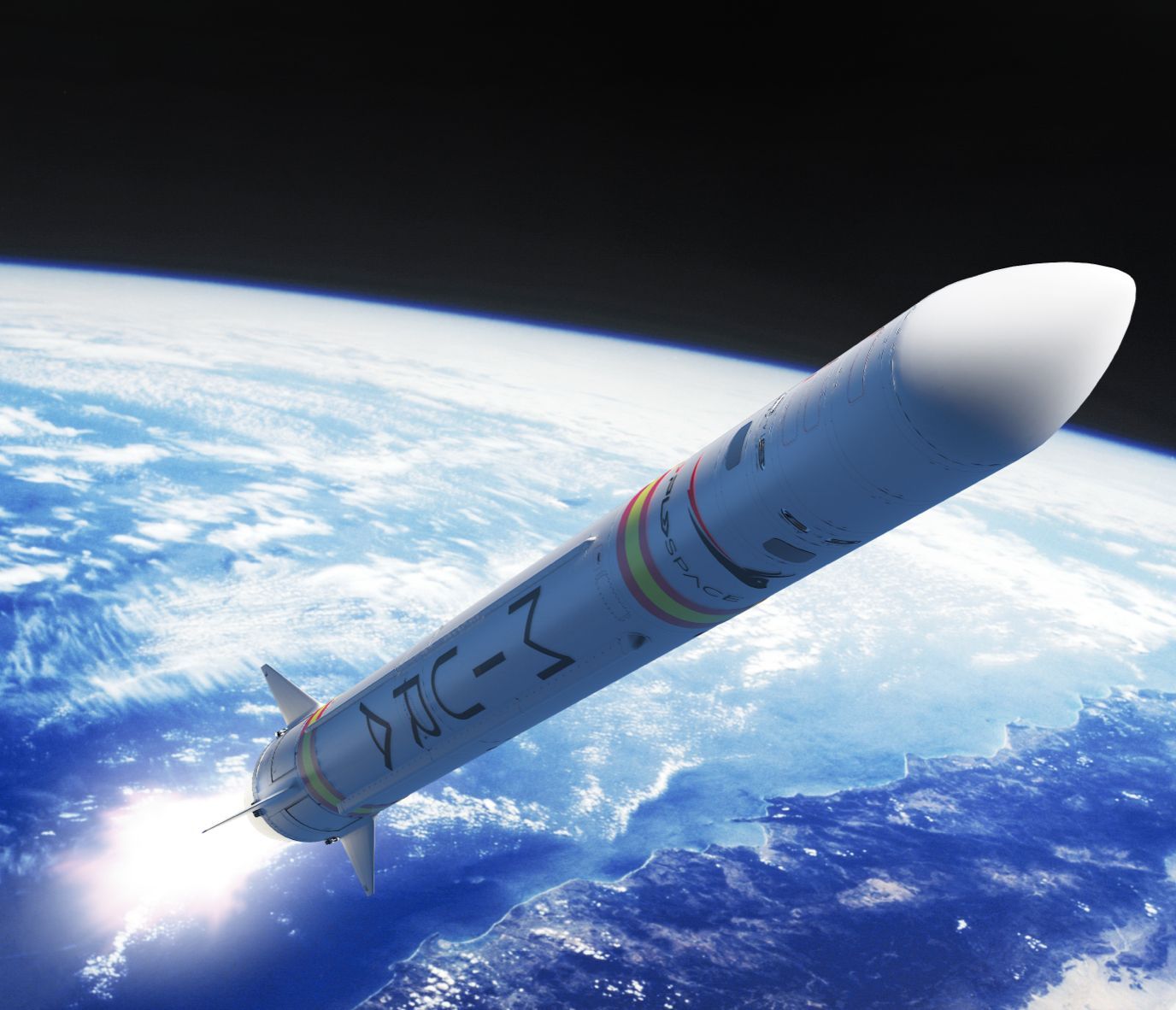
PLD Space's Miura-1 (Image: PLD Space)
Europe’s role as an international mediator
While Europe may face stiff competition, 2023 appears to be producing positive signs for their sovereign space industry. A report from Proactive Investors this week highlighted strong indications of growth for the continent, with investment in the space sector outstripping the US for the first quarter. According to the article, "a total of US$1.4bn was invested in 141 private space startups, according to the Seraphim Space Index, up 75% from the final quarter of 2022”, citing deals such as the US$165mln investment received by Germany's Isar Aerospace.
Activity and confidence in the European market does seem to be steadily increasing. Spain are on the cusp of making their presence known through the launch of their Miura-1 rocket in the coming weeks. Developed by PLD Space, the rocket is designed to carry 250kg more than 150 km up in the air, and its first flight will carry 100 kilograms of material from the German Centre for Applied Space Technology and Microgravity. The rocket will be launched from Spain in Adalucia, and perhaps more importantly it will be the first reusable rocket in Europe to launch. As we discussed earlier, this technology will be critical for Europe’s future success and commercial space access.
Spain are also making moves in the direct-to-smartphone market with Spanish company, Sateliot. They aim to use satellites to allow for cellphone connectivity when off the terrestrial grid, and companies such as Apple, T-Mobile, Starlink and Globalsat are already underway with such plans. Sateliot will send the first five of their satellites into orbit with SpaceX, and ultimately plans to launch 256 satellites by 2025. Direct-to-cell promises to be a game-changing moment for satellite operators and the cellphone industry, and Sateliot’s plans perhaps represent Europe’s intentions to be part of the action.
Direct-to-cell technology is just one example of the diverse opportunities in the New Space economy. This week UKspace, the official trade association of the UK space industry, launched a campaign aimed at creating awareness about the possibilities and opportunities of the space industry, particularly within agriculture, medicine and the everyday uses for complex smartphones and weather forecasting. Above all, such campaigns might go to show just how successful the space industry is in the UK at the moment, in creating jobs and providing economic growth.
But will Europe’s role be purely defined by its economic success? While that will be a critical factor, how will they align themselves in an increasingly divided environment, dictated by the fallout from geopolitics? Despite ESA seemingly distancing themselves from China, President Macron’s visit to China last week appears to have ended in renewed space relations between the two countries. An article from the Global Times praised China’s efforts to build new relations in space, namely that of the China-France joint statement, highlighting "satisfaction with cooperation on the Chang'e-6 probe, and on the joint research of extraterrestrial samples.” Could European nations still find themselves being able to partner with both the US and China?
Macron’s comments about Europe leaning less on the US were not met well by all, with some inferring this as France moving away from supporting Taiwan. However, if European nations continue on their path to become a true sovereign heavyweight in the space economy, then they may find that they have the strength and influence to mediate between the US and China, and help build a better future. Former British Prime Minister Harold Wilson once said that “a week in politics is a long time”, and this seems very apt for the situation the world is in right now. However, as things stand, Europe may find itself in a very special position.
External Links
This Week
*News articles posted here are not property of ANASDA GmbH and belong to their respected owners. Postings here are external links only.
Our future in space
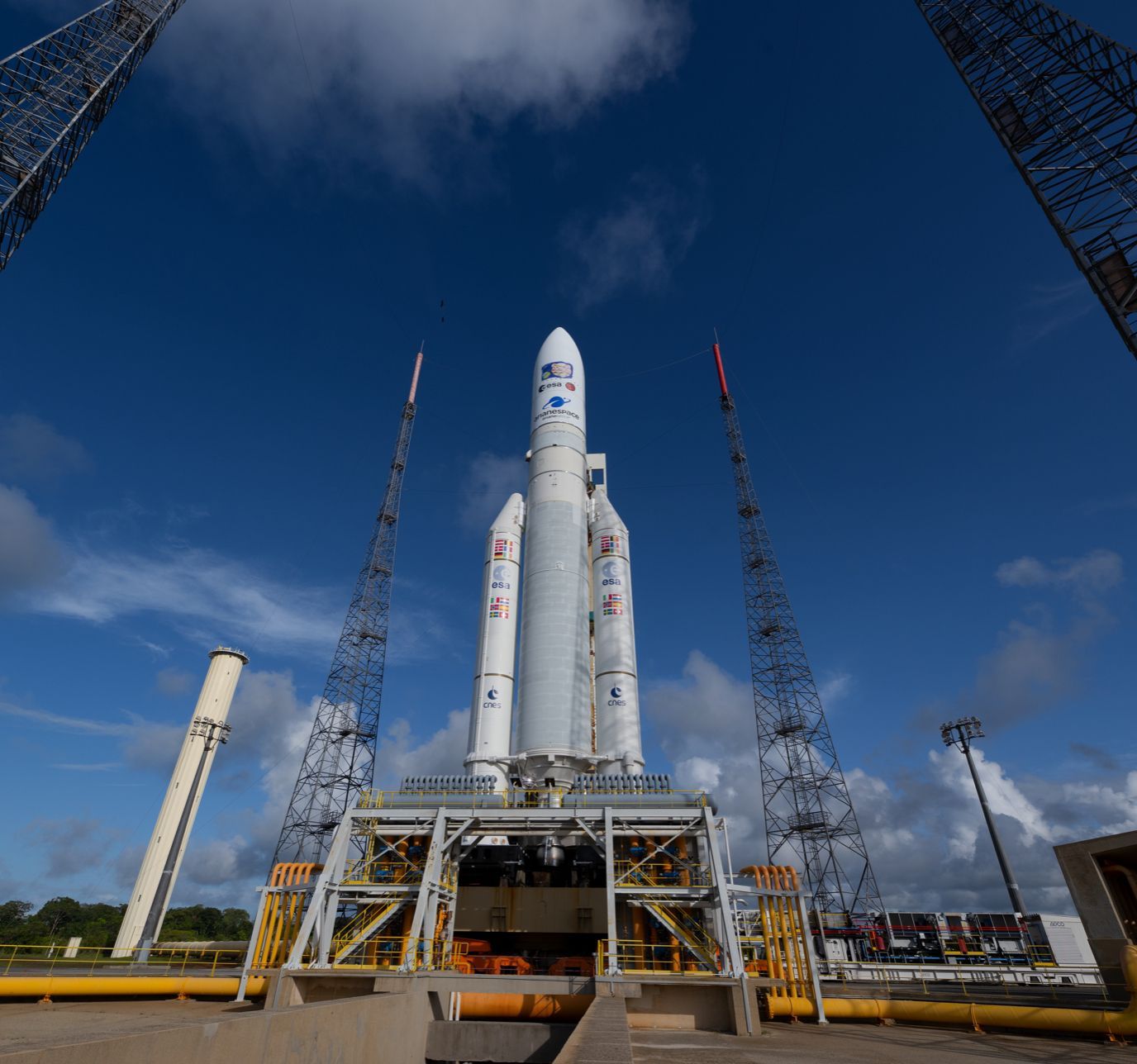
ESA prepare to launch JUICE (Image:ESA)
14 April 2023
As European nations seek sovereignty in space, how will they define their role on the international stage? - Space News Roundup
On Friday ESA’s Jupiter Icy Moons Explorer mission (JUICE) set off on its 8 year journey to explore the moons of Jupiter. The historic moment marks the first European mission to gas giant, and will carry 10 scientific instruments, to be used to observe and explore the possibility of life on the icy worlds of Ganymede, Callisto and Europa. Furthermore, the mission represents a continent that is redefining its role in space and pushing to establish itself as a heavyweight in the New Space economy.
ESA and European nations have long been promoting the idea of European space sovereignty, and have longed to achieve goals such as independent space launch capabilities. These goals seem to be coming closer. However, we also see the international market growing ever-more competitive, with new stakeholders looking to increase their access to space through reusable launch technology, and developing their own respective commercial sectors. European nations will need to work harder than ever in order to catch-up, and also keep-up.
But could Europe also play a pivotal role in defining relations in New Space? The Ukraine war, the Taiwan crisis and faltering economic conditions are reshaping international relations, and US-Chinese relations continue to deteriorate. Furthermore, in an interview over the weekend, French President Macron suggested that Europe should take an independent path and not follow US foreign policy on Taiwan, saying "Being an ally (of the US) does not mean being a vassal... doesn't mean that we don't have the right to think for ourselves,”. While his points were not met well with all leaders, does it suggest an overall European ambition to define its own position on the international stage? Could a European sovereign space programme play a role in mediating international relations?
International stage becoming increasingly innovative and competitive
European nations are taking big strides in space, but they will still have their work cut out in competing on the world stage. This week, new and established nations continued to break new ground. More updates regarding Japan’s iSpace and their maiden commercial lunar lander have been published, and it is now expected that the mission will arrive on the surface on April 25th. The lander will also delver the UAE’s first lunar rover, Rashid, and carry out the first commercial transaction on the Moon.
There have also been further updates regarding the debut of SpaceX’s reusable, interplanetary Starship, with Elon Musk now anticipating the third week of April for the maiden launch. But SpaceX are also beginning to face more competition in the reusability market. The South China Morning Post this week reported that China are planning to “drastically cut the cost of space launches in response to challenges from the United States’ reusable rockets.” A new launching system has been required to cut the cost of launches to 5 percent of that currently offered by the Chinese Long March rocket series. This would be achieved using the “Long-Range Aerospace Transportation System”, being built by China Aerospace Science and Technology Corporation (CASC). The hypersonic space plane would be able to carry up to a 60 ton payload into Earth orbit, and has also been required to be reused up to 100 times.
Similarly, Chinese company CAS Space (spinoff from from state-owned CAS) has been performing tests using a reusable rocket prototype with sea platform landing tests. The prototype reached 3,280 feet (1,000 m) and landed back on the platform. Also, Dawn Aerospace, operating from the US, New Zealand, and the Netherlands, has successfully tested their spaceplane. The prototype reached at altitude of 6,000 ft, with the aim of testing the feasibility of their “Mk II Aurora” to eventually be able to reach an altitude of 100km and return safely on the runway. Additionally, an increasingly familiar name in the space launch market, Relativity Space, announced this week that they will shelve plans for their Terran-1 rocket, which had a semi-successful launch last month, instead using resources to focus on their larger, fully reusable Terran-R rocket. The latter is being dubbed as a direct competitor to SpaceX’s workhorse Falcon-9 rocket.
Europe will have much work to do in order to compete in the launch market, especially since lacking efficient and cost-cutting reusable technology. But they also face competition in Earth orbit, with Starlink, Amazon Kuiper and OneWeb being just some of the mega-constellations dominating the finite number of satellite slots. On Tuesday, South Korea announced that they also plan to carry out the launch of a commercial satellite, as part of their bold plans for New Space. This follows on from their first first satellite launch using their homegrown Nuri rocket last June. The European Commission does have plans for its own constellation known as “IRIS2”, which aims to provide connectivity for the whole of Europe, and responds to the “increasingly contested geostrategic environment” (ec.europa.eu, 2022). However, they should notice the pace at which this market is moving, especially since China recently announced their own “Guowang” mega-constellation of 13,000 satellites.
Europe may also find cause to be concerned about their crewed-access to Earth-orbit in future, especially since ESA announced that they will no longer be working with China on their Chinese Space Station (CSS), citing political and financial reasons. Also, on April 10th the Russian TASS news agency announced that Roscosmos are moving forwards with plans for their new station (Russian Space Agency) and are taking steps to adapt their Angara-A5M launch vehicle in order to deploy the modules of the Russian Orbital Station (ROS).
With ESA moving away from the CSS, likely unable to work with Russia, and ISS coming to the end of its life, will Europe choose to work purely with future commercial space station partners? Or will president Macron’s sentiments become reality, where European nations choose to defy the US and build bridges with their adversaries?
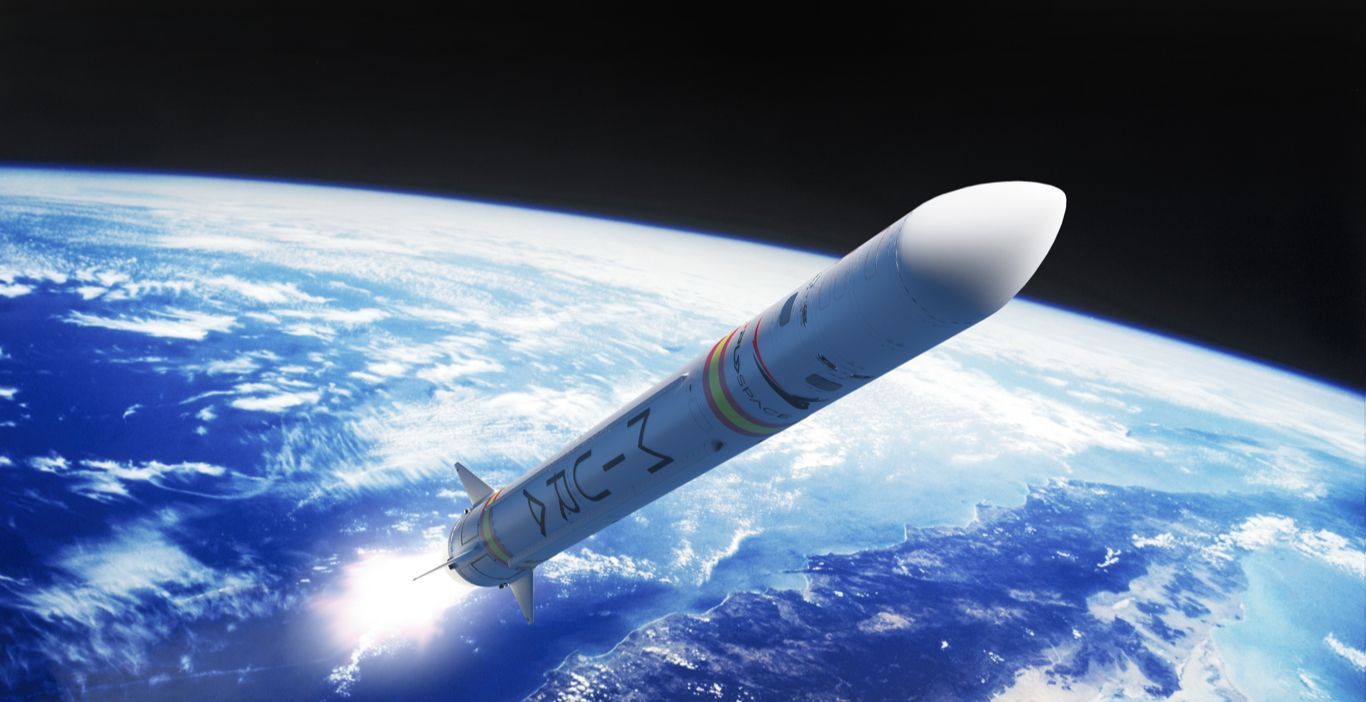
PLD Space's Miura-1 (Image: PLD Space)
Europe’s role as an international mediator
While Europe may face stiff competition, 2023 appears to be producing positive signs for their sovereign space industry. A report from Proactive Investors this week highlighted strong indications of growth for the continent, with investment in the space sector outstripping the US for the first quarter. According to the article, "a total of US$1.4bn was invested in 141 private space startups, according to the Seraphim Space Index, up 75% from the final quarter of 2022”, citing deals such as the US$165mln investment received by Germany's Isar Aerospace.
Activity and confidence in the European market does seem to be steadily increasing. Spain are on the cusp of making their presence known through the launch of their Miura-1 rocket in the coming weeks. Developed by PLD Space, the rocket is designed to carry 250kg more than 150 km up in the air, and its first flight will carry 100 kilograms of material from the German Centre for Applied Space Technology and Microgravity. The rocket will be launched from Spain in Adalucia, and perhaps more importantly it will be the first reusable rocket in Europe to launch. As we discussed earlier, this technology will be critical for Europe’s future success and commercial space access.
Spain are also making moves in the direct-to-smartphone market with Spanish company, Sateliot. They aim to use satellites to allow for cellphone connectivity when off the terrestrial grid, and companies such as Apple, T-Mobile, Starlink and Globalsat are already underway with such plans. Sateliot will send the first five of their satellites into orbit with SpaceX, and ultimately plans to launch 256 satellites by 2025. Direct-to-cell promises to be a game-changing moment for satellite operators and the cellphone industry, and Sateliot’s plans perhaps represent Europe’s intentions to be part of the action.
Direct-to-cell technology is just one example of the diverse opportunities in the New Space economy. This week UKspace, the official trade association of the UK space industry, launched a campaign aimed at creating awareness about the possibilities and opportunities of the space industry, particularly within agriculture, medicine and the everyday uses for complex smartphones and weather forecasting. Above all, such campaigns might go to show just how successful the space industry is in the UK at the moment, in creating jobs and providing economic growth.
But will Europe’s role be purely defined by its economic success? While that will be a critical factor, how will they align themselves in an increasingly divided environment, dictated by the fallout from geopolitics? Despite ESA seemingly distancing themselves from China, President Macron’s visit to China last week appears to have ended in renewed space relations between the two countries. An article from the Global Times praised China’s efforts to build new relations in space, namely that of the China-France joint statement, highlighting "satisfaction with cooperation on the Chang'e-6 probe, and on the joint research of extraterrestrial samples.” Could European nations still find themselves being able to partner with both the US and China?
Macron’s comments about Europe leaning less on the US were not met well by all, with some inferring this as France moving away from supporting Taiwan. However, if European nations continue on their path to become a true sovereign heavyweight in the space economy, then they may find that they have the strength and influence to mediate between the US and China, and help build a better future. Former British Prime Minister Harold Wilson once said that “a week in politics is a long time”, and this seems very apt for the situation the world is in right now. However, as things stand, Europe may find itself in a very special position.
Share this article
External Links
This Week
*News articles posted here are not property of ANASDA GmbH and belong to their respected owners. Postings here are external links only.
14 April 2023
As European nations seek sovereignty in space, how will they define their role on the international stage? - Space News Roundup
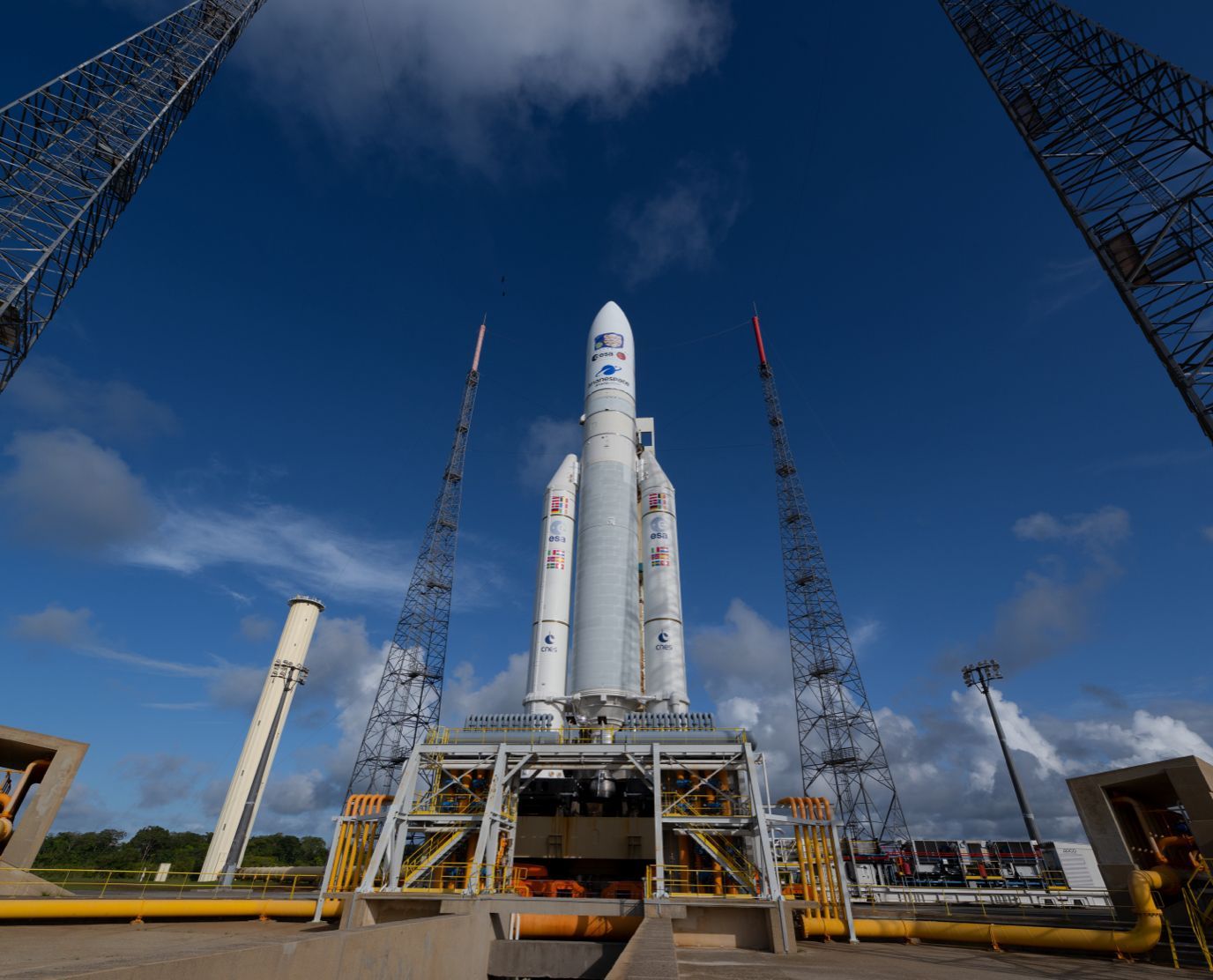
ESA prepare to launch JUICE (Image:ESA)
On Friday ESA’s Jupiter Icy Moons Explorer mission (JUICE) set off on its 8 year journey to explore the moons of Jupiter. The historic moment marks the first European mission to gas giant, and will carry 10 scientific instruments, to be used to observe and explore the possibility of life on the icy worlds of Ganymede, Callisto and Europa. Furthermore, the mission represents a continent that is redefining its role in space and pushing to establish itself as a heavyweight in the New Space economy.
ESA and European nations have long been promoting the idea of European space sovereignty, and have longed to achieve goals such as independent space launch capabilities. These goals seem to be coming closer. However, we also see the international market growing ever-more competitive, with new stakeholders looking to increase their access to space through reusable launch technology, and developing their own respective commercial sectors. European nations will need to work harder than ever in order to catch-up, and also keep-up.
But could Europe also play a pivotal role in defining relations in New Space? The Ukraine war, the Taiwan crisis and faltering economic conditions are reshaping international relations, and US-Chinese relations continue to deteriorate. Furthermore, in an interview over the weekend, French President Macron suggested that Europe should take an independent path and not follow US foreign policy on Taiwan, saying "Being an ally (of the US) does not mean being a vassal... doesn't mean that we don't have the right to think for ourselves,”. While his points were not met well with all leaders, does it suggest an overall European ambition to define its own position on the international stage? Could a European sovereign space programme play a role in mediating international relations?
International stage becoming increasingly innovative and competitive
European nations are taking big strides in space, but they will still have their work cut out in competing on the world stage. This week, new and established nations continued to break new ground. More updates regarding Japan’s iSpace and their maiden commercial lunar lander have been published, and it is now expected that the mission will arrive on the surface on April 25th. The lander will also delver the UAE’s first lunar rover, Rashid, and carry out the first commercial transaction on the Moon.
There have also been further updates regarding the debut of SpaceX’s reusable, interplanetary Starship, with Elon Musk now anticipating the third week of April for the maiden launch. But SpaceX are also beginning to face more competition in the reusability market. The South China Morning Post this week reported that China are planning to “drastically cut the cost of space launches in response to challenges from the United States’ reusable rockets.” A new launching system has been required to cut the cost of launches to 5 percent of that currently offered by the Chinese Long March rocket series. This would be achieved using the “Long-Range Aerospace Transportation System”, being built by China Aerospace Science and Technology Corporation (CASC). The hypersonic space plane would be able to carry up to a 60 ton payload into Earth orbit, and has also been required to be reused up to 100 times.
Similarly, Chinese company CAS Space (spinoff from from state-owned CAS) has been performing tests using a reusable rocket prototype with sea platform landing tests. The prototype reached 3,280 feet (1,000 m) and landed back on the platform. Also, Dawn Aerospace, operating from the US, New Zealand, and the Netherlands, has successfully tested their spaceplane. The prototype reached at altitude of 6,000 ft, with the aim of testing the feasibility of their “Mk II Aurora” to eventually be able to reach an altitude of 100km and return safely on the runway. Additionally, an increasingly familiar name in the space launch market, Relativity Space, announced this week that they will shelve plans for their Terran-1 rocket, which had a semi-successful launch last month, instead using resources to focus on their larger, fully reusable Terran-R rocket. The latter is being dubbed as a direct competitor to SpaceX’s workhorse Falcon-9 rocket.
Europe will have much work to do in order to compete in the launch market, especially since lacking efficient and cost-cutting reusable technology. But they also face competition in Earth orbit, with Starlink, Amazon Kuiper and OneWeb being just some of the mega-constellations dominating the finite number of satellite slots. On Tuesday, South Korea announced that they also plan to carry out the launch of a commercial satellite, as part of their bold plans for New Space. This follows on from their first first satellite launch using their homegrown Nuri rocket last June. The European Commission does have plans for its own constellation known as “IRIS2”, which aims to provide connectivity for the whole of Europe, and responds to the “increasingly contested geostrategic environment” (ec.europa.eu, 2022). However, they should notice the pace at which this market is moving, especially since China recently announced their own “Guowang” mega-constellation of 13,000 satellites.
Europe may also find cause to be concerned about their crewed-access to Earth-orbit in future, especially since ESA announced that they will no longer be working with China on their Chinese Space Station (CSS), citing political and financial reasons. Also, on April 10th the Russian TASS news agency announced that Roscosmos are moving forwards with plans for their new station (Russian Space Agency) and are taking steps to adapt their Angara-A5M launch vehicle in order to deploy the modules of the Russian Orbital Station (ROS).
With ESA moving away from the CSS, likely unable to work with Russia, and ISS coming to the end of its life, will Europe choose to work purely with future commercial space station partners? Or will president Macron’s sentiments become reality, where European nations choose to defy the US and build bridges with their adversaries?
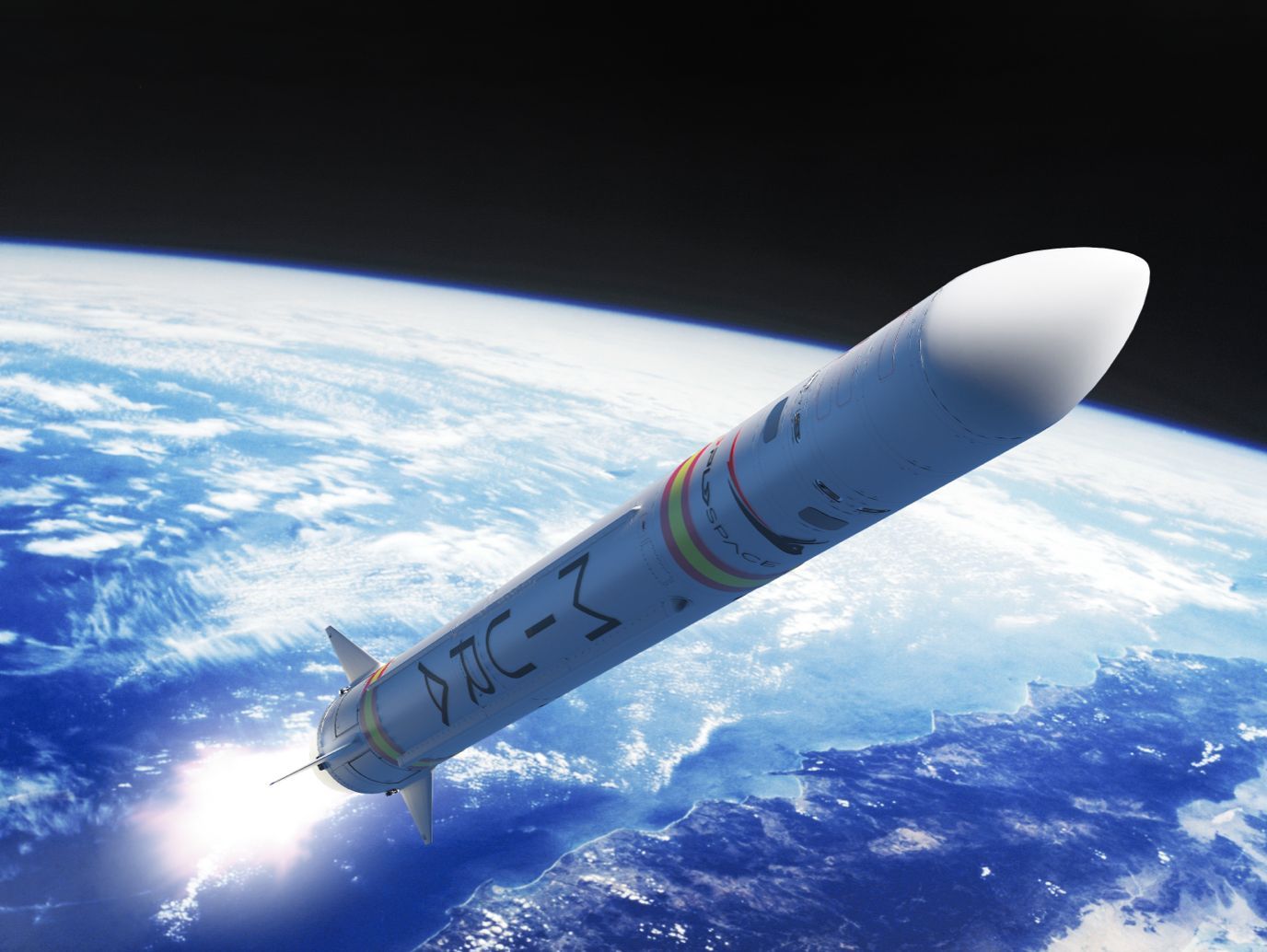
PLD Space's Miura-1 (Image: PLD Space)
Europe’s role as an international mediator
While Europe may face stiff competition, 2023 appears to be producing positive signs for their sovereign space industry. A report from Proactive Investors this week highlighted strong indications of growth for the continent, with investment in the space sector outstripping the US for the first quarter. According to the article, "a total of US$1.4bn was invested in 141 private space startups, according to the Seraphim Space Index, up 75% from the final quarter of 2022”, citing deals such as the US$165mln investment received by Germany's Isar Aerospace.
Activity and confidence in the European market does seem to be steadily increasing. Spain are on the cusp of making their presence known through the launch of their Miura-1 rocket in the coming weeks. Developed by PLD Space, the rocket is designed to carry 250kg more than 150 km up in the air, and its first flight will carry 100 kilograms of material from the German Centre for Applied Space Technology and Microgravity. The rocket will be launched from Spain in Adalucia, and perhaps more importantly it will be the first reusable rocket in Europe to launch. As we discussed earlier, this technology will be critical for Europe’s future success and commercial space access.
Spain are also making moves in the direct-to-smartphone market with Spanish company, Sateliot. They aim to use satellites to allow for cellphone connectivity when off the terrestrial grid, and companies such as Apple, T-Mobile, Starlink and Globalsat are already underway with such plans. Sateliot will send the first five of their satellites into orbit with SpaceX, and ultimately plans to launch 256 satellites by 2025. Direct-to-cell promises to be a game-changing moment for satellite operators and the cellphone industry, and Sateliot’s plans perhaps represent Europe’s intentions to be part of the action.
Direct-to-cell technology is just one example of the diverse opportunities in the New Space economy. This week UKspace, the official trade association of the UK space industry, launched a campaign aimed at creating awareness about the possibilities and opportunities of the space industry, particularly within agriculture, medicine and the everyday uses for complex smartphones and weather forecasting. Above all, such campaigns might go to show just how successful the space industry is in the UK at the moment, in creating jobs and providing economic growth.
But will Europe’s role be purely defined by its economic success? While that will be a critical factor, how will they align themselves in an increasingly divided environment, dictated by the fallout from geopolitics? Despite ESA seemingly distancing themselves from China, President Macron’s visit to China last week appears to have ended in renewed space relations between the two countries. An article from the Global Times praised China’s efforts to build new relations in space, namely that of the China-France joint statement, highlighting "satisfaction with cooperation on the Chang'e-6 probe, and on the joint research of extraterrestrial samples.” Could European nations still find themselves being able to partner with both the US and China?
Macron’s comments about Europe leaning less on the US were not met well by all, with some inferring this as France moving away from supporting Taiwan. However, if European nations continue on their path to become a true sovereign heavyweight in the space economy, then they may find that they have the strength and influence to mediate between the US and China, and help build a better future. Former British Prime Minister Harold Wilson once said that “a week in politics is a long time”, and this seems very apt for the situation the world is in right now. However, as things stand, Europe may find itself in a very special position.
Share this article
External Links
This Week
*News articles posted here are not property of ANASDA GmbH and belong to their respected owners. Postings here are external links only.























